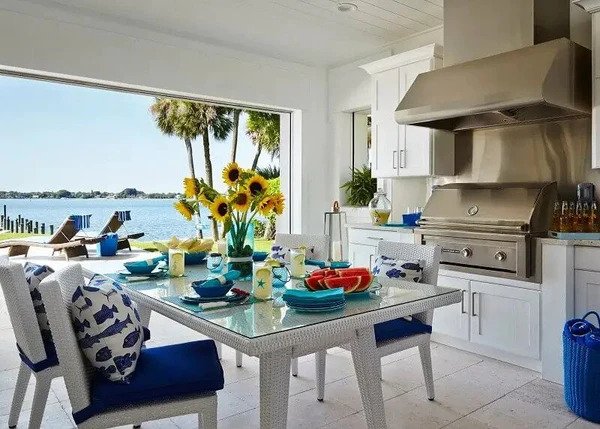Decorating your home reflects your personality, and mixing patterns can be a bold and beautiful way to express your unique style. However, it’s also a delicate art that requires a bit of finesse to get it right. In this guide, we’ll walk you through the principles of mixing patterns to create harmonious and visually appealing home decor.
1. Start with a Neutral Base
Before you dive headfirst into a sea of patterns, it’s essential to establish a neutral base. This typically involves choosing a neutral color palette for your walls, Furniture, and larger decor elements like rugs and curtains. Neutrals provide a calming backdrop that allows pattern mixing to shine without overwhelming the space.
2. Choose a Dominant Pattern
Every room needs a focal point, and this often comes as a dominant pattern in the world of pattern mixing. This could be a large floral print on a sofa, an intricate geometric pattern on an area rug, or even a bold wallpaper on an accent wall. The dominant pattern sets the tone for the room and serves as a guiding element for the rest of your choices.
3. Use Scale and Proportion
When combining patterns, consider the scale and proportion of each. Mixing different-sized patterns to create contrast and balance is generally a good idea. Pair a large-scale pattern with a medium or small-scale one to avoid overwhelming the eye. For example, if you have a large floral sofa, balance it with smaller geometric or striped throw pillows.
4. Stick to a Consistent Color Scheme
A cohesive color scheme is the glue that holds a patterned room together. Select a few key colors from your dominant pattern and use them as a guide when choosing other patterns in the room. This creates a harmonious flow and prevents the space from looking too chaotic.
5. Experiment with Different Pattern Types
There are various patterns: florals, stripes, plaids, polka dots, animal prints, and more. Mixing different pattern types adds depth and interest to your Decor. Don’t be afraid to experiment and combine patterns you might not initially think go together – sometimes, the most unexpected pairings create the most visually stunning results.
6. Balance Patterns with Solids
While patterns are the show’s stars, remember the supporting role of solid colors. Incorporate solid-colored elements like Furniture, pillows, or artwork to provide visual relief and prevent your space from feeling too overwhelming.
7. Test Before You Commit
Before making any permanent decisions, create a mockup or use fabric swatches to see how your chosen patterns interact in the space. This allows you to fine-tune your design and make adjustments as needed.
8. Add Texture and Layers
Texture is an often-overlooked aspect of pattern mixing. Incorporate various textures through textiles, such as a cozy wool throw, a plush velvet cushion, or a jute rug. These textures add depth and tactile interest to your Decor.
There are no hard and fast rules in the art of mixing patterns. The key is to trust your instincts, experiment, and create a space that feels uniquely you. When done right, pattern mixing can breathe life and personality into your home, transforming it into a place that’s beautiful and a true reflection of your style and personality. So embrace the world of patterns, and let your creativity shine in every corner of your home.


